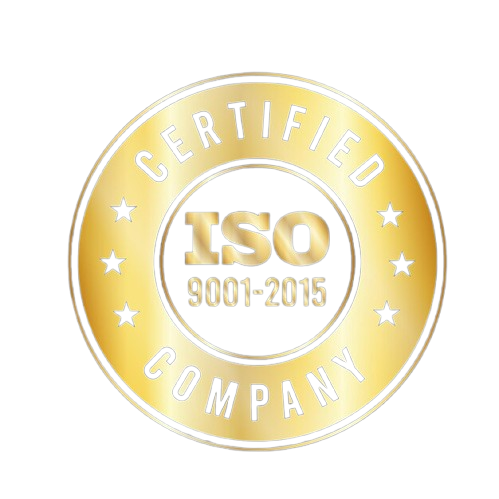Best Practices for Cleanroom Construction: Ensuring Efficiency and Compliance
Constructing a cleanroom is a complex endeavor that requires precise planning, specialized materials, and strict adherence to contamination control protocols. Cleanrooms are essential in various industries, including pharmaceuticals, biotechnology, electronics, and healthcare, where even the smallest contaminant can compromise product quality, patient safety, or research accuracy. Following best practices in cleanroom construction ensures a sterile environment, improves operational efficiency, and helps facilities comply with regulatory standards.
In this guide, we will cover the best practices for cleanroom construction, discussing critical elements, benefits, and the role of design choices in achieving optimal cleanliness and compliance.
Why Cleanroom Construction Standards Matter
Cleanrooms are controlled environments that regulate airborne particles, microorganisms, temperature, humidity, and pressure. Constructing a cleanroom that meets these exacting standards requires more than just selecting the right materials; it involves strategic planning, rigorous testing, and careful adherence to cleanroom classifications outlined by ISO (International Organization for Standardization) and GMP (Good Manufacturing Practices) standards.
A well-constructed cleanroom offers several benefits, including:
- Enhanced Product Quality: Preventing contamination reduces the risk of compromised products, ensuring consistent quality and efficacy.
- Improved Operational Efficiency: Cleanroom design choices, such as layout and airflow, enhance workflows and reduce the risk of contamination.
- Regulatory Compliance: Industries like pharmaceuticals and electronics must adhere to strict regulatory standards; a well-constructed cleanroom supports compliance with ISO and GMP requirements.
By following best practices, cleanroom construction teams can create a facility that meets stringent cleanliness and quality requirements, safeguarding both product integrity and employee safety.
Key Elements of Cleanroom Construction
Cleanroom construction must be approached with an understanding of the environment’s contamination control requirements, workflow, and industry-specific standards. Here are the key elements that form the foundation of effective cleanroom construction:
1. Cleanroom Classification
The level of cleanliness required in a cleanroom depends on the intended use and is defined by ISO classification standards:
- ISO Class 1 to 3: Used for highly sensitive applications, such as semiconductor manufacturing and nanotechnology, these classes allow only minimal airborne particles.
- ISO Class 5 to 7: Commonly used in pharmaceutical manufacturing, biotechnology, and healthcare, these classes allow slightly higher particle levels but still require strict control.
- ISO Class 8: Typically used in less critical environments, such as packaging or storage rooms, with moderate particle limits.
Each cleanroom classification has specific requirements for air filtration, airflow, and contamination control. Choosing the correct classification based on industry requirements is essential for both efficiency and compliance.
2. HVAC and Environmental Control Systems
HVAC systems play a crucial role in maintaining cleanroom conditions by controlling temperature, humidity, airflow, and filtration. A well-designed HVAC system ensures that cleanrooms maintain consistent environmental conditions to prevent particle buildup and control contamination levels. The key components of cleanroom HVAC systems include:
- HEPA and ULPA Filtration: HEPA (High-Efficiency Particulate Air) filters remove 99.97% of particles as small as 0.3 microns, while ULPA (Ultra-Low Penetration Air) filters capture particles down to 0.12 microns, ensuring that only purified air enters the cleanroom.
- Temperature and Humidity Control: Precision control of temperature and humidity levels prevents microbial growth and ensures product stability.
- Positive and Negative Pressure Control: Cleanrooms use positive or negative pressure to control air movement between clean and non-clean areas. Positive pressure keeps contaminants out, while negative pressure contains contaminants within specific zones.
A properly configured HVAC system helps facilities maintain the required cleanliness level while optimizing energy efficiency and compliance.
3. Cleanroom Layout and Design
A cleanroom layout that supports efficient workflow, contamination control, and safety is critical. When planning cleanroom construction, consider the following design features:
- Zoning: Dividing the cleanroom into distinct zones for various levels of cleanliness ensures that sensitive areas are protected.
- Personnel and Material Flow: Proper layout design should minimize personnel and material movement to reduce contamination risks. Pass-throughs, airlocks, and gowning rooms help maintain sterility.
- Airflow Control: Laminar airflow, which flows in a single direction, is often used in cleanrooms to prevent particle buildup on surfaces. Turbulent airflow may be used in lower classification cleanrooms where strict particle control isn’t as critical.
Careful attention to layout and flow ensures that the cleanroom operates efficiently and maintains cleanliness.
4. Materials and Surfaces
The materials used in cleanroom construction must support strict hygiene and contamination control. Common choices include:
- Walls and Ceilings: Non-porous, smooth materials like stainless steel, epoxy-coated walls, and modular cleanroom panels are ideal, as they prevent dust accumulation and are easy to clean.
- Flooring: Vinyl, epoxy, and other non-porous flooring materials are preferred for cleanrooms due to their durability and ease of sterilization.
- Doors and Windows: Double-glazed, hermetically sealed windows, and specialized doors with airtight seals ensure pressure control and prevent contamination.
Choosing durable, easy-to-clean materials is essential to maintaining the cleanroom’s integrity and extending its lifespan.
5. Lighting and Electrical Systems
Cleanroom lighting should support visibility without generating heat or compromising cleanliness. LED lights are a popular choice due to their low heat emission and energy efficiency. Electrical systems should be integrated into walls or ceilings to reduce the risk of contamination, and outlets should be flush-mounted to prevent dust buildup.
Best Practices in Cleanroom Construction
Following best practices in cleanroom construction ensures that the facility operates optimally, meets regulatory standards, and provides a safe, contamination-free environment. Here are some essential best practices:
1. Involve Experts from the Planning Stage
Working with cleanroom construction experts from the beginning ensures that the design and materials align with cleanliness and compliance requirements. Expert involvement in the early stages helps avoid costly modifications and ensures that all necessary components, from HVAC systems to material choices, are optimized for contamination control.
2. Choose Modular Construction for Flexibility
Modular cleanroom construction is highly flexible, allowing facilities to expand or modify cleanroom environments as needs change. Modular panels are prefabricated, making them quick to install and customize. This adaptability makes modular cleanrooms ideal for dynamic industries like biotechnology, where research and development needs may evolve.
3. Install Appropriate Filtration and Airflow Systems
Proper airflow and filtration are essential to maintaining cleanroom classifications. Install HEPA or ULPA filters based on the cleanroom’s requirements, and configure airflow systems for optimal particle removal. Regular filter replacement and monitoring are also critical for maintaining high air quality and compliance with ISO standards.
4. Design for Efficient Personnel and Material Flow
Contamination from personnel and materials is a significant risk in cleanrooms. Design the facility to reduce personnel traffic and streamline material flow. Gowning areas, air showers, pass-through chambers, and clear signage support contamination control by keeping movement within the cleanroom organized.
5. Plan for Maintenance and Monitoring
Cleanroom construction should incorporate access points for maintenance and monitoring. HEPA filters, HVAC components, and other critical systems require regular inspections and testing to maintain air quality and environmental control. Building easy access into the design helps simplify ongoing maintenance and ensures that compliance standards are consistently met.
6. Ensure Compliance with Industry Standards
Cleanroom construction must comply with ISO and GMP standards to meet regulatory requirements. ISO 14644 defines cleanliness classes, while GMP guidelines cover pharmaceutical production requirements. Working with a contractor who understands these standards is essential to ensuring that the facility meets compliance from the start.
7. Incorporate Safe, Durable Materials
Cleanrooms require non-porous, chemical-resistant, and easy-to-clean materials. Use stainless steel, epoxy-coated surfaces, and other non-shedding materials to reduce contamination risks and extend the cleanroom’s lifespan. Additionally, consider the specific needs of each zone within the cleanroom when choosing materials.
Advantages of Following Cleanroom Construction Best Practices
Adhering to best practices in cleanroom construction provides numerous benefits that support safety, efficiency, and compliance. Some key advantages include:
1. Enhanced Contamination Control
Following best practices in cleanroom construction significantly reduces contamination risks. From material choices to airflow systems, every aspect of construction is optimized to keep particle levels low, ensuring a sterile environment for sensitive processes.
2. Improved Product Quality and Safety
Well-constructed cleanrooms allow manufacturers to maintain consistent product quality, safety, and efficacy. This is especially important in industries like pharmaceuticals and biotechnology, where contamination can compromise product safety. Cleanrooms built to high standards minimize the risk of defective or unsafe products reaching the market.
3. Increased Efficiency and Cost Savings
Cleanrooms constructed using best practices are more efficient in both operation and maintenance. Optimized HVAC systems, durable materials, and well-planned layouts reduce energy consumption and maintenance needs, resulting in long-term cost savings. Efficient cleanroom design also minimizes operational disruptions and streamlines workflows.
4. Regulatory Compliance and Market Access
Cleanrooms that comply with ISO and GMP standards simplify the regulatory approval process, ensuring that facilities meet industry standards. Compliance with these regulations is essential for products to be accepted by regulatory bodies and meet market entry requirements.
5. Scalability and Adaptability
Following best practices in cleanroom construction, such as modular design, provides facilities with the flexibility to expand or reconfigure as needed. This adaptability is crucial for industries that require scalable solutions to accommodate production changes, technological advancements, or evolving regulations.
Best Practices for Cleanroom Maintenance
Once a cleanroom is constructed, regular maintenance is essential for long-term performance. Here are a few best practices for keeping the cleanroom in peak condition:
- Regularly Replace HEPA Filters: HEPA filters should be replaced based on usage and manufacturer guidelines to ensure consistent air quality.
- Monitor Pressure and Airflow: Routine checks of air pressure and airflow ensure that the cleanroom meets its designated classification.
- Clean and Inspect Surfaces: Cleanroom surfaces must be regularly sterilized with appropriate cleaning agents. Regular inspections help identify wear or damage that could compromise cleanliness.
- Calibrate Environmental Controls: Periodic calibration of temperature, humidity, and pressure controls ensures the cleanroom maintains optimal environmental conditions.
Why Choose Wise Link for Cleanroom Construction
At Wise Link, we specialize in high-quality, compliant cleanroom construction solutions that meet the exacting needs of industries such as pharmaceuticals, biotechnology, electronics, and healthcare. Our approach includes:
- Expert Design and Planning: We provide end-to-end design support, ensuring that every cleanroom meets cleanliness, efficiency, and compliance requirements.
- Modular Construction Options: With modular panels and custom layouts, we create adaptable cleanrooms that are easy to expand or modify as needs evolve.
- Compliance-Ready Solutions: All our cleanrooms are built to ISO and GMP standards, ensuring that facilities meet regulatory requirements from the start.
- Ongoing Support and Maintenance: Our services don’t end with installation—we offer maintenance support to keep cleanrooms in peak condition for years.
Achieving Excellence in Cleanroom Construction
Building a cleanroom that supports contamination control, efficiency, and compliance requires a comprehensive approach and adherence to best practices. By incorporating the right materials, designing effective layouts, and following ISO and GMP standards, cleanroom construction can yield a facility that upholds the highest standards of sterility and operational efficiency.
If you’re planning a cleanroom construction project, Wise Link provides the expertise and solutions needed to create a cleanroom that meets your industry’s demands. Contact us today for a consultation and custom quote to get started on building a cleanroom that supports safety, quality, and compliance in your facility.
Build Your Ideal Cleanroom with Wise Link’s Expert Solutions
Ensure Optimal Contamination Control and Regulatory Compliance. Contact Us Today for a Free Consultation and Custom Quote!



